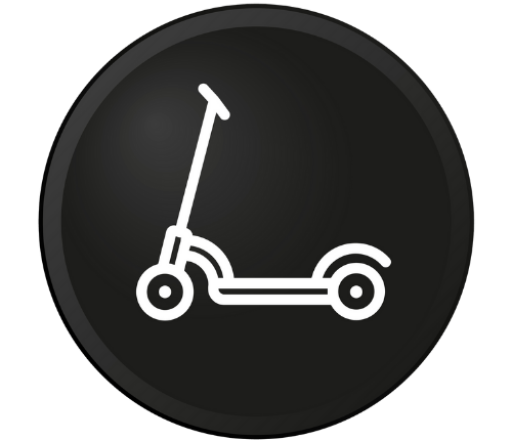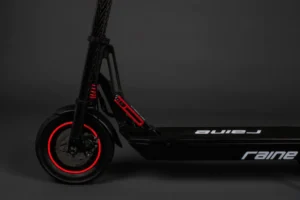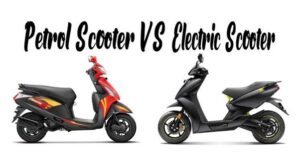Choosing the right bicycle can greatly enhance your riding experience, whether you’re navigating city streets or exploring rugged trails. City bicycles and mountain bikes are designed for different purposes, each with distinct features tailored to specific riding environments.
This article will compare city bicycles and mountain bikes, highlighting their key differences, benefits, and ideal usage scenarios to help you decide which type of bike best suits your needs.
City Bicycles
Overview
City bicycles, also known as urban or commuter bikes, are specifically designed for riding on paved roads and urban environments. They prioritize comfort, convenience, and practicality, making them an excellent choice for daily commuting and running errands around town.
Key Features
1. Frame Design
- Lightweight and Sturdy: City bikes typically have lightweight frames made from materials like aluminum or steel, ensuring durability and ease of handling.
- Upright Riding Position: The geometry of city bikes promotes an upright riding position, reducing strain on the back and shoulders.
2. Tires
- Smooth and Narrow Tires: City bikes come with smooth, narrow tires that offer low rolling resistance, providing a faster and more efficient ride on paved surfaces.
3. Gearing
- Multiple Gearing Options: City bikes often have a range of gears to handle various terrains, from flat streets to moderate inclines.
- Internal Gear Hubs: Some models feature internal gear hubs for low maintenance and ease of use.
4. Accessories
- Practical Add-ons: City bikes usually come equipped with accessories like fenders, racks, baskets, and lights to enhance convenience and safety.
Benefits
- Ease of Use: Designed for simple, straightforward riding, ideal for beginners and casual riders.
- Comfort: Upright position and ergonomic design reduce discomfort during long rides.
- Practicality: Integrated accessories make city bikes perfect for commuting and carrying groceries or work essentials.
- Eco-Friendly: Encourages sustainable transportation by reducing reliance on cars.
Ideal Usage
- Urban Commuting: Perfect for daily commutes to work or school.
- Errands and Short Trips: Ideal for running errands around town or short leisure rides.
- Casual Riding: Great for leisurely rides in parks or on bike paths.
Mountain Bikes
Overview
Mountain bikes are designed for off-road cycling, capable of handling rough terrains, steep climbs, and technical descents. They are built to be rugged and durable, with features that enhance performance and control on challenging trails.
Key Features
1. Frame Design
- Sturdy and Robust: Mountain bike frames are made from durable materials like aluminum, carbon fiber, or steel to withstand rough conditions.
- Suspension Systems: Equipped with front (hardtail) or both front and rear (full-suspension) shock absorbers to smooth out bumps and improve control.
2. Tires
- Wide and Knobby Tires: Mountain bikes have wide, knobby tires that provide excellent traction and stability on uneven and loose surfaces.
3. Gearing
- Wide Gear Range: Designed with a wide range of gears to handle steep ascents and descents, allowing riders to tackle various terrains.
- Durable Components: Components are built to endure tough conditions and heavy use.
4. Brakes
- Powerful Brakes: Mountain bikes are equipped with powerful disc brakes for reliable stopping power in all weather conditions.
Benefits
- Versatility: Capable of handling a wide range of terrains, from rocky trails to muddy paths.
- Durability: Built to withstand the rigors of off-road cycling, with durable frames and components.
- Performance: Advanced suspension and braking systems enhance control and performance on challenging trails.
- Adventure: Ideal for adventurous riders looking to explore nature and tackle challenging trails.
Ideal Usage
- Off-Road Trails: Perfect for riding on dirt paths, rocky trails, and mountainous terrain.
- Adventure and Exploration: Great for exploring the outdoors and embarking on cycling adventures.
- Technical Riding: Suitable for riders who enjoy technical challenges and rugged conditions.
City Bicycles vs. Mountain Bikes: Key Comparisons
1. Terrain Suitability
- City Bicycles: Best for smooth, paved roads and urban environments.
- Mountain Bikes: Designed for rough, uneven, and off-road terrains.
2. Comfort and Riding Position
- City Bicycles: Offer a more comfortable, upright riding position.
- Mountain Bikes: Typically have a more aggressive, forward-leaning position for better control on trails.
3. Speed and Efficiency
- City Bicycles: Faster and more efficient on paved surfaces due to their smooth tires and lightweight design.
- Mountain Bikes: Slower on pavement but provide better traction and control on rough terrain.
4. Maintenance
- City Bicycles: Generally require less maintenance, especially models with internal gear hubs.
- Mountain Bikes: More maintenance-intensive due to complex suspension systems and exposed components.
5. Versatility
- City Bicycles: Highly practical for daily commuting and short trips.
- Mountain Bikes: Versatile for a variety of terrains but less suited for urban commuting.
Conclusion
Both city bicycles and mountain bikes have their unique advantages and are tailored to different riding environments. If your primary need is for daily commuting, running errands, and casual rides in an urban setting, a city bicycle is your best bet.
On the other hand, if you enjoy exploring rugged trails, tackling challenging terrains, and embarking on outdoor adventures, a mountain bike is the ideal choice.
Consider your riding habits, preferred terrain, and specific needs when choosing between a city bicycle and a mountain bike. By selecting the right bike for your lifestyle, you can enhance your cycling experience and enjoy the many benefits that come with this healthy, eco-friendly mode of transportation.



